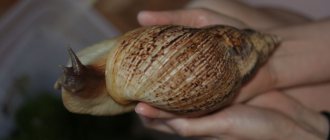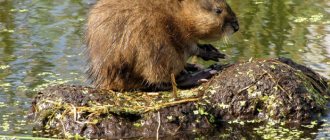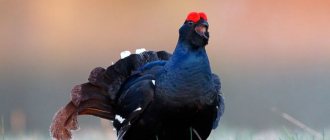- Wild animals
- >>
- Birds
Bright, attractive appearance, melodious voice - all this makes the oriole one of the most famous birds in its class. The oriole often adorns scientific journals, children's books, notebooks and postcards. It can be easily recognized by its beautiful melody, reminiscent of the sounds of a flute. But, despite their great recognition, few can boast of deeper knowledge about these small birds. Their lifestyle, habits and other features deserve attention!
Origin of the species and description
Photo: Ivolga
The oriole, or common oriole, is a relatively small bird with bright, colorful plumage. It is the only representative of the large oriole family, which is widespread in the northern hemisphere, where a temperate climate prevails. Scientifically, this bird is called Oriolus. There is an opinion that this name comes from the Latin word “aureolus”, which translates as “golden”. For this reason, the appearance of this name for the bird is explained by its rich color of feathers.
Fun fact: Orioles are songbirds with a flute-like voice. However, the song of these birds is not always pleasant to the ear. Sometimes they make very ugly sounds or even “meow.” “Meowing” is a kind of signal when there is danger for its relatives.
The oriole is easy to recognize among the variety of other birds. It is small, reaches twenty-five centimeters in length and has a body weight of, on average, seventy grams. Orioles are very active, rarely sit still, but are completely unsociable. They prefer to spend time alone or with their partner. The outstanding feature of these birds is their color. The feathers of adults are bright gold, yellow, green-yellow, black and white.
Orioles have many close relatives. These include representatives of starlings, corvids, drongs, and leaflets.
Orioles are usually divided into two subspecies, depending on the characteristics of the color of their feathers:
- o. kundoo Sykes. This subspecies lives in some regions of Kazakhstan, Central Asia, and Afghanistan. They have several common external features: the second flight feather is identical to the fifth, there is a black spot behind the eye, the outside of the tail feathers are also painted black;
- o. oriolus Linnaeus. These birds build their nests in Europe, Kazakhstan, Siberia, India, and Africa. Their second flight feather is slightly larger than the fifth, and there is no black spot behind the eye. The tail feathers are painted black on the outside.
Female and male: main differences
Sexual dimorphism of the oriole lies in the variety of plumage.
Most often, males have a golden hue and black wings with a tail. In the female, green and yellow are dominant - in the upper part of the body and a white belly. The wings are colored gray-green. From this it emerges that sexual dimorphism in birds is strongly expressed.
The beak of both sexes is quite pronounced - it is long, the color is brown or dark pink. As for size, the male and female do not differ much in body weight and size. The only thing is the more noticeable elegance of the female, the elongation of the neck.
Appearance and features
Photo: Oriole bird
What people value most about orioles is their interesting appearance, in particular the beautiful, colorful coloring of their feathers. Based on their color, these birds are divided not only into subspecies, but also by gender. Females and males of such birds have different feather colors. Thus, males have the most striking appearance. Their body is bright yellow and golden with black wings. Such a bright appearance helps males quickly and easily attract females.
Females have a more modest appearance, but are also very beautiful. Their body is swamp colored. Dark spots are visible on the female's chest and belly, and the wings have a gray-green tint. The plumage of these representatives of the oriole family is quite bright, so they cannot be confused with any other birds. These birds always attract the eye and stand out from the rest.
Video: Oriole
Otherwise, females and males have similar parameters. They are quite small. The height does not exceed twenty-five centimeters, and the weight only in exceptional cases reaches one hundred grams. On average, birds weigh only about seventy grams. The wingspan is fifty centimeters. The body of adult individuals has a slightly elongated shape. The beak is very strong, strong, and has a red-brown color.
These birds do not like to sit still, so their wings are quite strong. The flight of orioles is undulating and very fast. This tiny bird can reach speeds of up to seventy kilometers per hour. Despite such excellent flight characteristics, orioles are rarely seen in open air spaces. They prefer to fly in the thick of the forest, between the trees. Another distinctive feature of birds is their voice. Orioles have a unique timbre and can produce various sounds – pleasant and not so pleasant.
Keeping at home and breeding
Bird lovers often prefer these small colored birds. But if you decide to keep an oriole at home, then you need to familiarize yourself with a number of rules and restrictions.
Under no circumstances should you catch this bird and put it in a cage. Orioles are very freedom-loving birds. In captivity they will live no more than 3-5 days. It's another matter if you tame a small chick. But you should know that an oriole will never sing in a cage. If this freedom-loving bird resigns itself to captivity, then you still will not be able to hear its flute voice.
Orioles are cautious and timid. They prefer to please people away from them. Orioles are not domestic birds. Unfortunately, you won't be able to please the oriole. She prefers to eat found animals rather than purchased food. Due to eating disorders, many of these birds do not survive. This once again confirms that the oriole is destined for freedom. The human hand will only harm her.
From this it turns out that breeding an oriole at home is a very difficult task, sometimes impossible. Even the most avid bird lovers will have an oriole that will live no more than 3 years without offspring.
If you decide to get an oriole, then be sure to buy a large cage - the oriole loves to fight from corner to corner. Its feathers are soft, and if the cage is small, there is a risk that the bird will injure its feathers.
The oriole feels much better in its natural environment. The oriole is a monogamous bird - it chooses a mate for life. During the year, the female nurses 3-4 chicks. The incubation period for eggs lasts about 15 days. Basically, the female incubates; the male can only replace her for a few hours. The parents feed the little birds, first with bugs and then with berries. In general, orioles feed their chicks about 210 times a day - 10-15 times per hour. At the age of 15-17 days, the little oriole can already fly.
We invite you to read: How to raise a companion dog?
Where does the oriole live?
Photo: Oriole in flight Author: Svetlana Medvedeva (@msvetlana012018)
Orioles are a very widespread species. In their natural habitat, birds live in huge populations. Such birds have a number of requirements for their habitat. They prefer only temperate climates. Very high temperatures or cold are contraindicated for them. For this reason, birds settle on the northern side of the equator, in regions with acceptable temperatures.
The most numerous populations of orioles live in Europe. They are common in Sweden, Finland, Poland, Belarus, and Russia. Such birds are also found on the southern coast of England, on the Isles of Scilly. Sometimes the oriole can be found on the islands of Madeira and the Azores. However, their population there is very unstable. These birds are also a rare visitor to the British Isles.
Its habitat also covers Asia, in particular its entire western part. Bangladesh, India, Western Sayan, and the Yenisei Valley are the most favorite habitats for orioles. The oriole, regardless of its territory of residence, is a migratory bird. With the onset of cold weather or in the absence of food, birds change their habitat. The only exceptions are Indian bird populations. They can only carry out minor flights.
In their natural range, orioles are quite selective. They like to live high in trees, mainly in deciduous forests with high humidity. They prefer poplar, birch, and willow groves. In areas with high temperatures, such birds live along river valleys, choosing places with dense thickets. Huge populations of such birds are found on deserted islands. Less commonly, orioles can be found in gardens, parks, mountains, very close to humans.
Habitat
By origin, all orioles are typical southerners. The greatest species diversity of these birds is observed in Asia and Africa; several species can be found in Australia. The only true northern inhabitants can be called the common oriole, widespread throughout Eurasia, and the “false” Baltimore oriole, which lives in North America. Only two of these species are migratory, the rest are sedentary. Common orioles fly to Africa, India, and Bangladesh for the winter, and Baltimore orioles fly to South and Central America. But even these northerners demonstrate their pampered disposition. They arrive at their nesting sites very late - at the end of May, and are among the first to fly away at the end of August.
The southern origin of these birds also determines their adherence to certain habitats. Most of them clearly prefer moist, dense, but light forests. Among African species there are lovers of open and dry landscapes (for example, nun, masked and African black-headed orioles). Even in Europe, common orioles try to settle primarily in deciduous forests and only when there is a lack of territory - in mixed and coniferous forests. According to their lifestyle, these are diurnal birds that live in the upper tier of the forest. They almost never go down to the ground and do not look for food in the undergrowth. In general, orioles are secretive and unsociable. Their behavior was probably influenced by their lower fertility compared to other passerine birds, forcing these birds to be more careful.
At the same time, orioles compensate for their reserved nature with beautiful singing. The voices of all species sound very similar. The usual song consists of short “fu-fu” sounds, similar to the sound of a flute, at the climax they turn into a longer “fiu-tiu-liu”. These sounds are an integral part of spring-summer trills, which will not leave any person indifferent. At the same time, orioles are capable of making completely unexpected sounds. In case of danger, they scream like tattered cats. Juveniles squeak thinly. The flight of these birds is undulating and moderately fast, but if necessary, orioles can reach speeds of up to 70 km/h.
The diet of orioles consists mainly of insects caught in the thick of the crowns. Here they catch spiders, dragonflies, butterflies, longhorned beetles, bedbugs, beetles, ground beetles, large mosquitoes and flies. There are many pests among these species, but the benefit of orioles also lies in the fact that they prey on hairy caterpillars, which most birds avoid. Along with orioles, only cuckoos can destroy such caterpillars. In addition to insects, these birds do not disdain juicy fruits of cherries, currants, grapes, bird cherry, palm trees, and ficus. In species such as the Baltimore, African black-headed and fig orioles, the proportion of plant foods in the diet is especially high.
What does the oriole eat?
Photo: Migratory bird oriole
Orioles have a rather interesting diet. It depends on many factors: the region where the birds live, season, time of day, subspecies. Insects always come first in their diet. At the same time, the list of insects includes species that only orioles and cuckoos eat.
Among insects, favorite delicacies are:
- caterpillars;
- butterflies;
- small and medium-sized wood bugs;
- spiders;
- mosquitoes;
- geese
Interesting fact: Few people know that orioles bring great benefits to humans and the forest. They eat hairy caterpillars, which are very dangerous to trees. Other birds avoid such insects, because they have poisonous hairs covering most of their body.
Birds hunt for these insects in two ways. They can find their lunch right in the treetops or catch it in the air. Insects are extracted from under the bark using a sharp, strong beak. Sometimes insects make up almost ninety percent of the daily diet. When harvest time comes, these birds include various berries and fruits in their diet.
This list includes:
- pear;
- cherry;
- currant;
- grape;
- cherries;
- apricot;
- figs;
- bird cherry;
- currant.
Little orioles don't eat that much. Their appetite increases only during the period of active reproduction. Then the diet of birds begins to include very nutritious protein foods in large quantities. During the mating season, orioles feast on earwigs, forest bugs, and fairly large dragonflies. At the same time, birds can destroy the nests of small birds. However, they do this not so often.
Interesting fact: The process of eating for orioles takes a short time and often only in the morning. The rest of the day, orioles pay attention to their other “businesses,” only occasionally snacking.
The oriole is one of the best forest songbirds and useful birds. According to the scientific classification, the oriole belongs to the class of birds, order - passeriformes, family - orioles.
2. The oriole family consists of more than 30 species, which are divided into two genera. Orioles are most common in the tropics and subtropics, including Africa, Asia, Australia and some parts of Europe.
3. The most common species: common oriole, green-headed oriole, striped oriole, African black-headed oriole, Indian black-headed oriole, Chinese black-headed oriole, nun oriole, masked oriole, great-billed oriole.
4. The oriole is a small bird with a bright color. The scientific name of the bird is Oriolus. The root of the word is similar to the Latin word aureolus, which means “golden.” Most likely, the bird acquired its name due to its colorful and rich coloring.
5. The distribution area of the oriole covers the territories of Europe and Asia, South-Western Siberia, North-West Africa.
Common oriole
6. The most common species is the common oriole. This bird lives in Europe, Western Siberia, and Asia. And they winter in Africa, Ceylon, Madagascar, and India.
7. The plumage of the common oriole is bright, the dominant colors are yellow, black, green. It usually has black wings, a silver-white belly, and a black tail tip. The oriole's beak is often brown. The birds weigh 50-90 grams, body length 24-25 cm.
8. Oriole I am not particular about food. Its diet includes fruits and small animals. This bird is the most common, unlike its other species. It is easy to recognize due to its bright colors, while other species have a more subdued range of colors.
9. Among the common orioles, it is customary to distinguish two subspecies. One of them has no spot in the area behind the eye, while the other has one.
10.Birds live in forests on trees, the locations of which are near bodies of water. Orioles prefer sparse forests of birch or pine.
African Black-headed Oriole
11. African black-headed orioles are the smallest of the entire family. The length of their wing is 12-15 cm. The color of the dorsal part is olive-golden-yellow, the head, wings and neck are black. The abdomen is golden yellow.
12. The African oriole can be found in the tropical forests of Africa, in Ethiopia. Orioles nest high in trees. Their masonry is cup-shaped. Closer to the equatorial African range, the oriole clutch contains only 2 eggs, and in the northern part - up to 4. The eggs are white-pink, as if strewn with reddish-brown drops.
13.The diet of the African oriole includes caterpillars and seeds, but mostly fruits, which is why it is considered a pest of fruit trees.
14. Orioles give priority to feeding in the first half of the day. At all other times of the day, birds can only have a snack.
15. In pre-rain weather, the melodic voice of the oriole becomes similar to the meowing of a cat.
Chinese black-headed oriole
16. Chinese black-headed orioles are common in the Indian, Siberian and Far Eastern regions. These are mainly arboreal birds that inhabit broad-leaved, mangrove forests, old park and garden areas, even in city centers.
17. In the forests and gardens inhabited by Indian black-headed orioles, the sounds of a high-pitched whistle, similar to the sound of a flute, are heard.
18. The nests of Chinese black-headed orioles are located on tall trees. Fruits and insects make up the bulk of the diet of these birds.
19. Sexual dimorphism of the oriole lies in the variety of plumage. Most often, males have a golden hue and black wings with a tail. In the female, green and yellow are dominant - in the upper part of the body and a white belly. The wings are colored gray-green.
20. The beak of both sexes is quite pronounced - it is long, the color is brown or dark pink. As for size, the male and female do not differ much in body weight and size. The only thing is the more noticeable elegance of the female, the elongation of the neck.
Indian black-headed oriole
21. The Indian black-headed oriole has a characteristic high-pitched whistle, similar to the sounds of a flute. Lives in India and East Pakistan.
22. Orioles reproduce once a year. The nest of representatives of this species is very similar to a basket of grass and leaves. Birds also use bast, birch bark, plant fibers, and pieces of moss to build a “house.”
23. By the end of May - beginning of June, a clutch occurs, in which there are 4-5 eggs, painted white with small black or brownish-brown spots of irregular shape.
24. The chicks are incubated exclusively by the female. After 2 weeks of incubation, the chicks begin to hatch. After another 2-2.5 weeks they leave the nest.
25. The oriole never winters in Europe. This is due to the upcoming difficulty in finding food, as well as intolerance to the low air temperatures common in Europe.
26. The oriole is a migratory bird. In August she flies to Tropical Africa. The oriole, in comparison with others, arrives much later - in mid-May, when it is already quite warm outside.
27. It is extremely difficult to see an oriole. The fact is that she likes to hide in the foliage, moreover, at a considerable height, at which it is impossible to see the oriole.
28. The oriole is a useful bird: it eats large quantities of forest pests - these are hairy caterpillars, which other birds do not eat because of their poisonous hairs.
29. Oriole chicks, like ugly ducklings, have a gray and motley color and are not famous for their magical singing.
30. Breeding orioles at home is a very difficult task, sometimes impossible. Even the most avid bird lovers will have an oriole that will live no more than 3 years without offspring.
31. The green oriole has smaller parameters than the common one. Its body length is no more than 24 cm, and its weight is up to 65 grams. The dominant color is green and all its possible shades. Most often, the green or yellow color of the oriole is only a small skein on the body; usually it forms a line along the neck and a stripe on the abdomen. The legs are colored blue, and the beak is dark brown.
32. The green-headed oriole inhabits the territory of Kenya and Tanzania. She is a tropical species of oriole. The most favorite habitat of these orioles is tropical and subtropical rain forests.
33. The oriole is a monogamous bird - it chooses a mate for life.
34. The name “oriole” itself has Slavic roots. Its cognate word is “moisture,” and it was believed that the oriole is a harbinger of rain.
35. The singing of the male oriole is especially significant; it is with the help of his voice that he attracts the female.
Striped oriole
36. The species of striped oriole is especially common in New Guinea and Australia. The striped oriole chooses eucalyptus forests for settlement.
37.The color of the striped oriole is less bright. Pastel colors predominate, muted green and gray dominate. Body length 26-28 cm. Weight 96 grams.
38. During the year, the female nurses 3-4 chicks. The parents feed the little birds, first with bugs and then with berries.
39. In general, orioles feed their chicks about 210 times a day - 10-15 times per hour.
40. At the age of 15-17 days, the little oriole can already fly.
41. The nun oriole is common in Ethiopia and Eritrea. Its habitat is tropical rainforests.
42.Color pattern of this species of oriole: yellow, black and green. The head of the oriole nun is always black, the beak is brown-red.
43. The large-billed oriole is common in Africa, especially on the island of Sao Tome. This is easy to explain - this island is famous for its dense forests, which orioles adore so much. The birds got their name due to their wide beak. It is characteristic only of this species of orioles.
44. The large-billed oriole does not exceed 22 cm in body length and 50-55 grams in weight. In this species, sexual dimorphism is especially noticeable: males have a black head, females have a lighter, gray head. In addition, in females you can notice streaks along the body. Both sexes have a pale pink beak, sometimes dark burgundy, yellow undertail, and dark wings.
45. Orioles return to their homeland late, by the end of April or the beginning of May, and the males arrive earlier than the females. After their return, the pairing begins.
46. Orioles love water very much, they often swim, which is why they try to choose a place of residence closer to bodies of water.
47. The masked oriole lives in Africa, the Sahara, among tropical rainforests, in dense bushes and thickets. The plumage is bright, yellow and golden colors dominate. The beak is flesh-colored.
48. In the list of orioles’ favorite ingredients, insects and fruits come first. This is due to the habitat - orioles nest in trees, so they have access to insects such as mosquitoes, butterflies, beetles, and some types of spiders.
49. Orioles also love to feast on pears, cherries, apricots, currants, and grapes.
50. Orioles are very peaceful and friendly birds. Among dozens of types of behavior, they are more likely to choose calm, phlegmatic observation rather than fuss.
photo from the Internet
Features of character and lifestyle
Photo: Oriole bird
The oriole can be called one of the most peaceful and friendly birds. They don't like fuss. They lead a calm, even phlegmatic lifestyle. They treat people without fear, they do not like to intrude on other species of birds, so they always stay away. Most often, orioles spend their day alone, jumping from one branch to another. During the mating season, the birds stay in pairs and build a nest. Only occasionally do orioles show aggression. They may even attack other birds who want to disturb their chicks or break the nest.
This species of birds loves a calm, measured lifestyle. For their comfortable existence, they choose forests dominated by tall trees. Usually these are birch and poplar groves. In dry areas this bird can rarely be seen. Only small populations live there, staying close to river valleys and thickets. Regardless of its habitat, it is quite difficult to spot such a bird in the wild. She prefers to hide in the thickets, in the crown of trees.
The oriole spends its entire day in motion. She jumps from one tree branch to another. If there is a river or pond nearby, then the birds will definitely fly there and swim. They love water. Water not only cools, but also brings great pleasure to these animals. In this they are very similar to common swallows.
While it is almost impossible to see orioles in wild forests and dense groves, you can admire their bright appearance in parks and gardens. Orioles do not avoid being close to humans. In many countries, they settle nearby in huge populations. The main thing for these birds is the availability of water and food.
Wild or domesticated
Due to its spectacular variegated plumage and pleasant voice, people are showing increased interest in the oriole. Therefore, they tried many times to accustom the bird to life at home. But such attempts are practically unsuccessful, since the birds are shy and cautious in communicating with humans.
In addition, the oriole is demanding of food, since it obtains it independently. Bird mixtures from pet stores do not fully meet the needs of birds. If the pet is suspicious of the food given by the owner, then in captivity it will prefer to starve.
As a result, an eating disorder appears, often leading to the death of the pet. An obvious conclusion follows from this: the oriole is a bird that lives in nature, so it is not recommended to tame it.
Social structure and reproduction
Photo: Oriole chicks
The common oriole is a monogamous bird. The mating season begins quite late, because birds arrive at their nesting sites after migration only after the first greenery appears. First, males fly to the nests, then females. Orioles breed once a year. It is difficult to clearly name the breeding season, because it depends on the habitat and subspecies of birds.
During the mating season, the male behaves most actively and defiantly. He tries to demonstrate himself to the females with all his appearance. Males actively jump from branch to branch, fly around their chosen one, showing off their beautiful and bright “outfit”. Sometimes males are forced to chase the female. While flirting, orioles sing, whistle and chirp beautifully. In the event of a quarrel between males, even fights can occur. Orioles very jealously guard their territory and female.
Interesting fact: Males are very vocal; during the mating season they practically do not stop talking. The rest of the time, the singing of these birds can not be heard so often. Thus, outside the mating season, males start song only when the humidity level increases significantly. Thus, people began to predict rain.
Orioles place their nests high above the ground. Externally, the “houses” resemble a small hanging basket. The birds weave their nests from dry grass stems, strips of bast, and birch bark. The inside of the home is insulated with down, cobwebs, and leaves. Sometimes, to build a nest, orioles use various garbage that people left in the forest. Both future parents take part in the construction of the nest. The male brings suitable material, the female lays it down.
Shortly after mating, the female lays eggs. There are about four eggs in one clutch. The eggs are pink or cream colored and have some bright red speckles. The female incubates the eggs for about two weeks. Only sometimes can a male replace her at “post.” After birth, the chicks are fed by their parents for fifteen days.
Mating season
The male oriole, seeking attention from the opposite sex, behaves very assertively and persistently. It attracts the favor of the female not only due to its spectacular plumage. The main weapon during the mating season is a melodic and iridescent voice. We recognize him by his characteristic singing manner of “fiuu-fiuu-fit” and “gii-gii-gii.”
The formed pair builds a nest for the offspring, which looks like a small grass bag hanging from a branch. The male searches for material, while the female takes over construction.
One clutch does not exceed 3-5 eggs. Their color is beige-pink; there are brownish spots on the surface of the shell. While the female is hatching her offspring, the parterre becomes the breadwinner and guardian of the family.
Natural enemies of orioles
Photo: Oriole songbird
Despite their modest size and very noticeable appearance, orioles rarely become victims of natural enemies. This is due to the peculiarities of their lifestyle. These birds are unsociable and prefer to spend most of their time in thickets, among trees at high altitudes. Also, during the day, it is almost impossible to catch these birds searching for and eating food. They prefer to eat most of their daily diet early in the morning.
Cases of attacks on orioles are quite sporadic. The most dangerous natural enemies for them are sparrowhawks, falcons, eagles, and kites. It is the feathered predators who know the approach and can quickly catch an oriole and feast on it for lunch. Other large birds usually prey on orioles' nests. However, it rarely happens without a fight. Orioles carefully protect their offspring. They fearlessly fight birds that decide to eat chicks or eggs.
Other animals rarely attack orioles; such cases are rare. This usually happens while searching for berries, fruits or swimming. Orioles are especially vulnerable to bird predators during the nesting period. They are too busy looking for food or a mate, so they lose their vigilance. However, having successfully completed the nest, their level of safety increases. Nests are always well camouflaged and located in hard-to-reach places.
Feed
The diet of the oriole bird consists of animal and plant foods. During the breeding season, it mainly feeds on tree insects, especially caterpillars (even hairy ones). Orioles also eat:
- butterflies;
- earwigs;
- dragonflies;
- long-legged mosquitoes;
- tree beetles;
- bedbugs;
- soft-bodied;
- click beetles;
- leaf beetles;
- longhorn beetles;
- weevils and other insects.
They also catch some spiders.
They are even capable of destroying the nests of small birds, such as the gray flycatcher and redstart. They willingly eat ripe fruits and berries:
- grape;
- cherries;
- bird cherry;
- currants;
- pear;
- figs, etc.
Usually eating occurs early in the morning, a little less often - after 15 hours.











